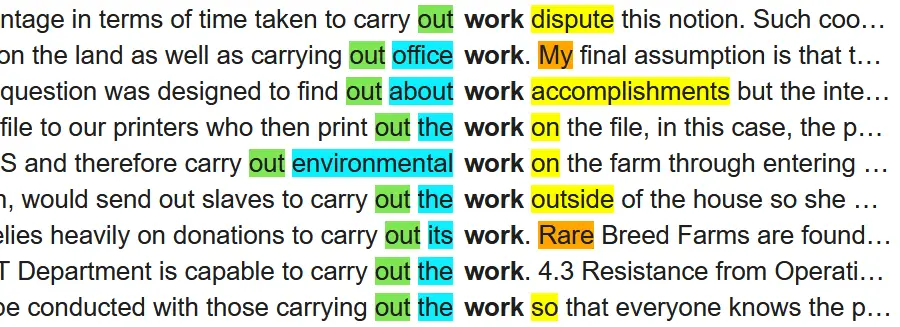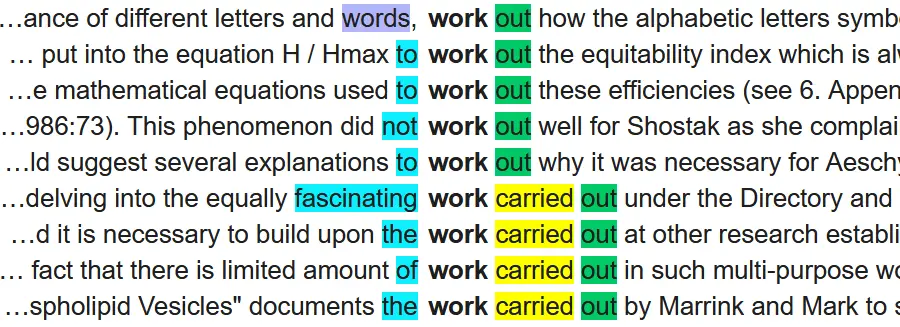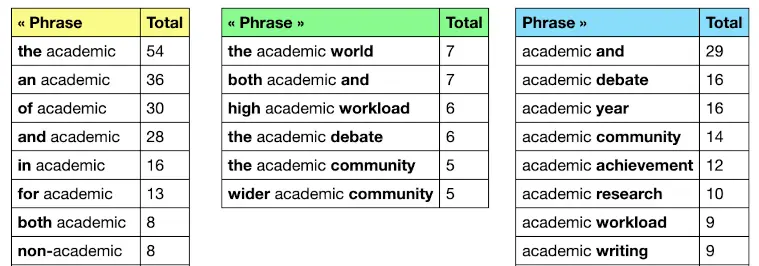|
I've spent the last few weeks designing (and debugging) a
concordancer for academic English.
In case you haven't used one before, a concordancer is essentially a search engine tool which is used to examine a corpus (a collection of authentic texts)
in order to view words in context and extract information about frequency, range, collocation and grammar. This allows
students, teachers and researchers to make decisions based on actual usage, rather than relying on intuition.
There is a
guide to using the concordancer on the site
for a detailed description of how to use it. Don't be scared: although concordancers can be confusing, this one is designed to be as easy to use as possible.
Try out: Concordancer for academic English
Read: Guide to using the concordancer
Some notes. First, while I've done a lot of debugging, there will inevitably still be a few bugs in the concordancer. If you notice any, please let me know so I can fix them.
Second, the concordancer may be a little slow at first. It's new. However, it is designed to store search results, meaning the more it is used,
the faster it will be.
The following are some examples of concordance lines, so you can see how it works. These are for the BAWE (British Academic Written English),
a 6.5 million word corpus of written academic English. The concordancer can also be used with the BASE (British Academic Spoken English) corpus,
and the BNC Baby, a 1 million word sub-corpus of the British National Corpus.
The first example, below, is for the word work with the word out to the left.

Although there are only a few lines above, it can be seen that the words work and out often combine via the phrasal verb carry out,
i.e. carry out work.
The following shows the word work with the word out to the right.

It is used several times as a phrasal verb (to work out), but also several times with the phrasal verb carry out, this time in the passive,
i.e. work carried out.
The examples above show the kinds of conclusions that can be drawn by studying authentic academic language.
The concordancer also shows frequent combinations to left/right/middle. Below are some combinations for the word academic in the British Academic
Written English (BAWE) corpus, with some interesting combinations e.g. wider academic community, several collocations from the Academic Collocation List (ACL),
e.g. academic debate, academic year, and a collocation not in the ACL, i.e. academic workload.

| 
























